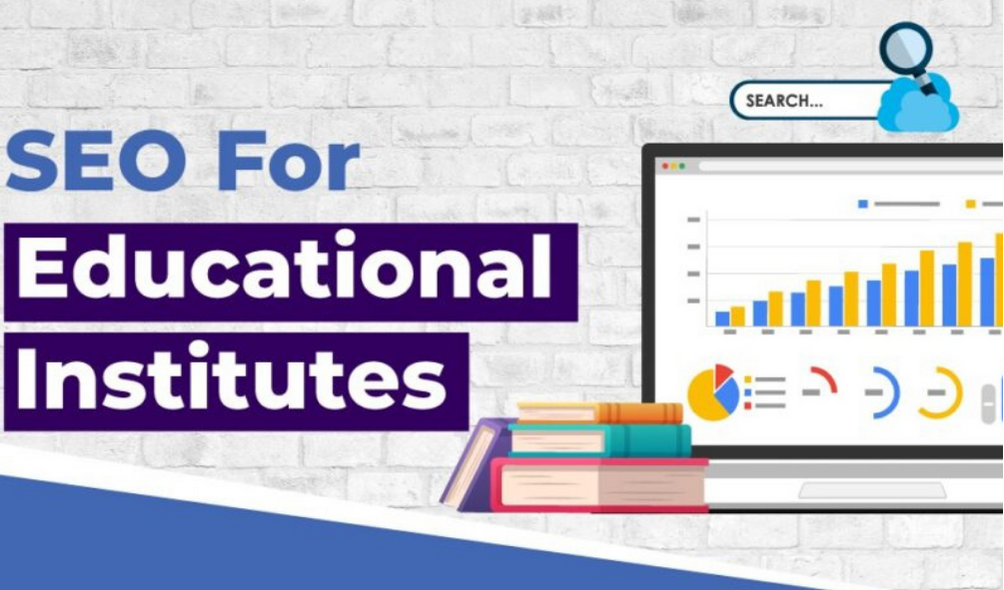
In the digital landscape, having a search engine-friendly website is crucial for educational institutions. Search engine optimisation (SEO) plays a significant role in improving website visibility and driving organic traffic. In this blog, we will explore the importance of technical SEO for educational institutions and discuss key strategies to ensure a search engine-friendly website that attracts prospective students and enhances online visibility.
SEO for educational institutions encompasses optimising website infrastructure and backend elements to improve search engine performance, known as technical SEO. It includes optimising website structure, speed, mobile-friendliness, metadata, etc. By prioritising technical SEO, educational institutions can enhance their website’s visibility, achieve higher rankings in search engine results, and attract relevant organic traffic. These optimisations play a crucial role in driving online success for educational institutions and ensuring their website is easily discoverable by their target audience.
A comprehensive website audit is the starting point for optimising SEO for educational institutions. It involves evaluating the website’s structure, navigation, URL structure, metadata, headers, keyword optimisation, speed, and mobile-friendliness. By conducting a thorough SEO audit, institutions can identify areas of improvement and lay a strong foundation for their SEO efforts. This process allows them to uncover any technical issues or gaps in their website’s SEO performance, enabling them to make the necessary optimisations and enhance their online visibility.
A well-organised website structure and navigation system contribute to a positive user experience and better search engine rankings. Educational institutions should create a logical and user-friendly website structure, implement proper internal linking, and optimise XML sitemaps and the robots.txt file. It ensures that search engines can easily crawl and index the website’s pages.
Website speed is a crucial factor in user satisfaction and search engine rankings. Educational institutions should focus on optimising website speed by implementing caching, compression, and minification techniques. Optimising images and reducing server response time can significantly improve website performance.
With the increasing use of mobile devices, having a mobile-friendly website is essential. Educational institutions should prioritise responsive design and ensure their website functions seamlessly on various devices and screen sizes. Regular mobile testing and optimising for mobile browsing enhance the user experience and improve SEO performance.
Metadata, including title tags and meta descriptions, is crucial in search engine rankings. Educational institutions should focus on writing compelling and keyword-rich metadata to represent their web pages accurately. Utilising header tags (H1, H2, etc.) to structure content and optimising image alt tags and URLs further enhances the website’s search engine visibility.
Structured data markup provides search engines additional context about the website’s content. Educational institutions can implement schema markup to enhance search engine results, improve click-through rates, and display rich snippets. Using structured data can also help achieve featured snippets, further improving online visibility.
Website security is crucial for both user trust and search engine rankings. Educational institutions should implement HTTPS and SSL certificates to ensure secure browsing. Protecting against malware and spam and promptly resolving security issues helps maintain a safe and trustworthy website.
For educational institutions targeting a local audience, local SEO for educational institutions is essential. This involves registering and optimizing a Google My Business listing specifically tailored to the institution, incorporating location-based keywords and content, and actively encouraging online reviews and testimonials from the local community. By optimizing for local search, educational institutions can effectively connect with prospective students in their immediate area, driving higher visibility and engagement within the local community.
Educational institutions should regularly monitor and analyse website performance using tools like Google Analytics and Google Search Console. Tracking key metrics such as organic traffic, bounce rate, and conversion rates provides valuable insights into the effectiveness of SEO efforts. By analysing data, institutions can identify areas for improvement and make data-driven decisions to enhance website visibility.
In the dynamic field of SEO for educational institutions, it is crucial for these organizations to stay updated with the latest SEO best practices, industry trends, and algorithm updates. By engaging in continuous learning, professional development, and adapting SEO strategies, educational institutions can ensure they maintain a competitive edge in the digital landscape. Keeping abreast of SEO developments enables these institutions to optimize their online presence, improve search engine rankings, and effectively reach their target audience. Embracing ongoing education and staying up-to-date with SEO practices are essential for the long-term success of educational institutions in the digital realm.

Conclusion:
By prioritising SEO for educational institutions, these organisations can create a search engine-friendly website, thereby improving visibility, attracting organic traffic, and effectively engaging with their target audience. Optimising the website structure, speed, mobile-friendliness, and metadata and implementing structured data markup is crucial for achieving better search engine rankings. Regular monitoring, analysis, and staying up-to-date with SEO best practices enable educational institutions to continually enhance their online presence and drive success in the digital realm.
In an increasingly competitive educational landscape, SEO for educational institutions emerges as a powerful tool that can provide a significant competitive advantage. By prioritising a search engine-friendly website, institutions can boost their online visibility and expand their reach to a broader audience of prospective students. Educational institutions can optimise their website through effective SEO strategies, resulting in improved search engine rankings and an enhanced user experience. These optimisations ultimately lead to higher engagement and conversion rates, solidifying the institution’s position in the market.
With the continuous evolution of search engine algorithms, staying proactive in implementing SEO for educational institutions and adhering to technical SEO best practices is crucial for maintaining a strong online presence. By embracing SEO, educational institutions can position themselves as industry leaders, attract qualified leads, and ultimately achieve their enrollment and growth objectives in the digital era. Keeping up with the latest SEO trends and advancements ensures that educational institutions stay ahead of the competition and effectively reach their target audience, driving success in the online landscape.